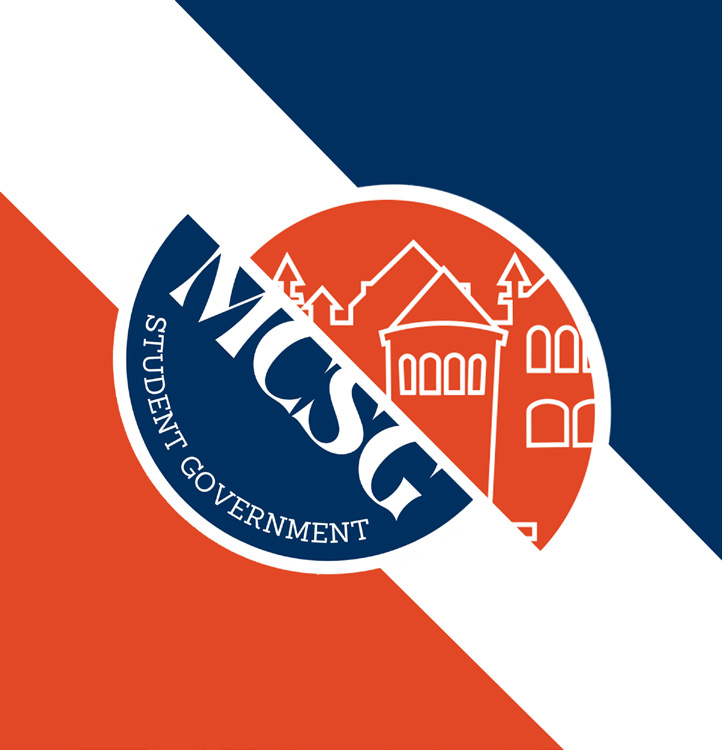The future of student governance: MCSG’s path to introspection
April 21, 2022
Student governance relies on the cohesion of two separate units: students and a governing body. Macalester College Student Government (MCSG), within its constitutional application, works to “ensure direct student participation in campus governance.” The inclusion of student voices within the college’s bureaucratic system is fully MCSG’s responsibility to nurture. This article will analyze the extent to which students and governance have been tackled by MCSG. With the first article focusing on the student body’s task in shaping the future of student governance, this article moves to the next step, looking at where that governance lies.
I must clarify that I have never been directly involved within MCSG as a member in any capacity. My analysis stems from observations, personal experiences with MCSG and its members, as well as conversations and interviews with MCSG members and affiliates throughout the college.
With that being said, as I called for conversation around introspection within the student body in the last article, I will do so on MCSG in this article. There is no denying the institutional purpose and presence MCSG has. However, when criticizing student governance, one must acknowledge the active choices made by MCSG members that drive and stagnate the change that is occurring.
Lack of representation of non-white and marginalized idenitites creates a breeding ground for conversations of institutional crtiqu by the privileged. Accountability is then stuck in the crosshairs of an unengaged student body, student governing body and a detached administration. My last article touched on the idea of institutional mimicry. The presence of the word “government” creates an opportunity for students to harbor misunderstanding. But those misconceptions are left to fester if those representing the student body do not prevent it.
The idea that MCSG exists to refine resumes and launch political careers, though a generalization that is unrepresentative of MCSG members, comes from MCSG’s hesitancy in changing that image. The past few years have come with administrative change, but also an increase of BIPOC and marginalized representation within MCSG, which has shifted the purpose of involvement and engagement. The future of BIPOC and marginalized representation comes head first at the wall of visibility, broken at the neck by the mismatch of effort, presence and investment.
Outward projection of purpose
Increased representation cements involvement and engagement. There is a concentrated community of students within the college that engage with MCSG. We saw it in the fall election numbers. 700 or so people voted, which was less than half of the total population of students, and some of the elections remain uncontested. Class representatives run with the guarantee of a win.
The outward projection of MCSG (its purpose, presence and mission) suffers from inadequate investment. We have yet to see MCSG actively engage with students. MCSG has avenues of engagement, and the way students interact with them amplifies the spread of misconceptions. On the MCSG website, there is a systematic breakdown of different resources and documents available. The Student Services and Relations Committee(SSRC) has an Instagram page with weekly updates, introduction to members, resources and office hours information. Aside from the SSRC Instagram, the larger MCSG also has an Instagram, as well as individual representatives and the Community Engagement Officer (CEO)Ayana Smith-Kooiman’22, who are also active on social media.
Each of these resources provide ample opportunities to engage with Executive Board members and class representatives. However, within these spheres of conversation, it is the same faces and voices that are present. MCSG engagement has become individualized, with specific people posting and increasing visibility to a concentrated group of people that may or may not follow them.
Why is the SSRC the only committee that actively posts updates? Though the work of other committees like the Academic Affairs Committee (AAC), Student Organization Committee (SOC) or Financial Affairs Committee (FAC) deal with the great institutional changes required within student life, the absence of engagement through social media prevents the one-to-one connection between members of those committees to the students that rely on their hard work. Individual members of these committees may be visible and active within their work, but the opportunity for a cohesive presence is lost. Outside of individualistic work, the unpaid effort and time students are investing within their committees is overlooked and belittled by students because of their absence of visibility.
Even with the MCSG Instagram, those in charge are work-study students and not elected members of MCSG like the CEO or EB members that can convey their mission from within. The external projection of MCSG is not one that is heavily monitored by the greater MCSG body. The collective image is tainted by the dominance of the individual, heightening the mismatch between expectation and delivery.
Due to the absence of the larger body, institutional change is put on the shoulders of individuals that have stepped into their responsibilities. When individuals run for an individual cause, the integrity of the body is at harm.
“There are amazing people in MCSG who do amazing work, but there aren’t enough of them,” said sophomore representative and Vice-President elect Bobbie Pennington ‘24.
We have not put faces to committees, but we can put faces to causes. Although the latter is critical in the cultivation of accountability, the former is equally responsible for the cultivation of responsibility and proper governance.
Cultivating accountability
The internal assembling of MCSG members has yet to couple up with the external understanding of MCSG that exists. Aside from the structural understanding one would be privy to, they are not fully aware of the work and expectations that await them. The responsibilities, work input and labor that one learns in MCSG are much different than the basic information and readiness of those entering MCSG. The lack of internal training amplifies cultures of individualism within MCSG. The misalignments of expectancy and reality created from experience heightens the gap created from over- promising and under-delivering.
MCSG members take part in a retreat at the beginning of the school year. Additionally, at the end of the school year, there is a meeting focused on reflection and conversation on the year passed.
President of MCSG Shreya Nagdev ‘22 states that “What I wanted through the retreat was to have every committee have a good amount of time of bonding that wasn’t the silly ice breakers, but fully being vulnerable with one another.”
Individual members within MCSG will only engage with the body if they see it as a viable option. There is a trend of students joining MCSG and then leaving after their first or second year, due to their inability to align themselves with the responsibilities that await them. One is entitled to leaving their position if they find it ill-fitting for them, but their inconsistency is a testament to lack of internal investment that fosters those structures of support.
The eclectic nature of MCSG poses issues of intentional presence and trust. Due to different inner factions, accountability exists in different forms to the different experiences and identities presented within MCSG. However, “work [MCSG duties] happens through conversation” says senior representative Amber Sofge’22. Accountability is confrontation. It must start small and expand. The concentration of committees makes accountability a small affair. Within the 6 elected members of the AAC, 5 elected members of FAC, 4 elected members of SOC, and 6 elected members in SSRC, accountability is in every corner. Accountability becomes a much more daunting task when those numbers become 15 at-large members or 20 and so on. The starkness of responsibility is loud, but even louder because of the separation of these committees from each other.
The game of telephone between committees severs clear-cut communication. Earlier this year, the SSRC began working on a bias incident toolkit. At the same time, the addressing discrimination ad hoc committee (created to tackle specific issues within LB meetings) began working on a similar toolkit. However, the ad hoc committee eventually dissolved, and the work shifted to the chair of the committee (sophomore representative Eric Yu ‘24) and the SSRC. The discrimination toolkit, created by the SSRC after the events of the November sit-in, was left unfinished due to miscommunication and absence of commitment.
“Bylaws don’t change culture because cultural change takes time,” Sofge said..
What does the culture of change look like in MCSG? As members enter this era with a clean vision of the outcomes they hope to achieve, who are left behind?
Redistribution of power and responsibility
The culture of accountability that is created by the student body unto MCSG members, and amongst MCSG members, must arise from the effective utilization of power. There is a maldistribution of responsibility that is exacerbated by the absence of accountability. We, the student body, alongside members of MCSG must be critical of the way we utilize those with direct administrative relations. We must question the leveraging of power and facetime our representatives have with senior staff and administrative members.
What is the unilateral role that MCSG members have alongside the President and the Board of Trustees Liaison (whose role will be further discussed in the next issue).
“My exec[utive] board knew almost every conversation I had with senior staff, in confidentiality they knew it, and I told them what they could tell their committees, and I did recommend that they did talk to their committees about what was going on; I did let every committee chair know of the things that were happening as much as I was able to” MCSG President Shreya Nagdev’22 said.
MCSG is a connective tissue of people that work together to uphold the integrity of the body. That can only be possible through equal distribution of work, responsibility, and community involvement. To the extent that is possible, these conversations that trickle from administration and into the committees, can be properly cultivated through visibility amongst one another, that can then extend to the greater student body.
BIPOC and marginalized representation within MCSG sheds light on the depths of the mistakes made by this college. However, this greater involvement does not absolve white and non-marginalized students within MCSG from the responsibility to work alongside them to aid in the work needed. BIPOC and marginalized MSCG members can not pull the weight to ensure the needs of students they represent are met.
“I did try to distribute the workload but it was met with deaf ears, no one would pick it and no one would respond” Nagdev said.
White and other privileged MCSG members must be present in these conversations
“If we need to properly drive positive change in this institution, we need everyone there. Some people, because society has told them that we will always listen to you, their opinions have more power and weight, and if you are told people won’t listen to you, you won’t take up the space that you deserve,” Vice President and President elect Jordanella Mpoyo ‘23 said.
Implementing structural change
Introspection on the structural level will determine the trajectory of MCSG. We must cultivate accountability within Legislative Body (LB) meetings. Opening the floor for clear communication of expectations will foster the ability to share updates from representatives on the work they have carried outside of the LB meetings. Performance reviews by members of MCSG and the Executive Board explicitly points out expectations that may have been misunderstood or absent.
“It’s very easy to be that person in MCSG to show up to the Tuesday night meeting and then maybe a committee meeting once a week, and that’s your MCSG work done, but there needs to be communication throughout the week between those Tuesdays that remind us on issues, check up on us, and hold us accountable,” Pennington said.
Redistribution of responsibility beyond the 6 members of SSRC from LB meetings also allows for the diversification of input, such as the increased response on issues from members within different committees (within their specialized skill sets). Stagnation occurs when student problems are not communally tackled. With both the FAC and SOC dedicated to students organizations (comprising almost half of MCSG), Pennington suggested “combining FAC and SOC to deal with organizations within chartering and financing, … expand[ing] the AAC, and split[ting] the SSRC into two.”
Pennington’s ideas are only a fraction of the ideas of improvement that exist within MCSG. The implementation and management of these changes is a much different conversation. However, for MCSG to stand firm in binding the student body to governance, it must look within and assess what governance looks like moving forward. The upcoming and final article in this series will adequately examine the future of student governance through the role of the administration.
Corrections
The student tool kit was an initiative by the SSRC and it began long before the November-sit-in. Anna and I had a meeting with Provost in September about it. It was NEVER left unfinished by the SSRC because the ad-hoc committee took over it. We were only responsible for reviewing their finished work which we did not receive. We even set up a meeting with representatives from the ad-hoc asking how we could help because we started the initiative and cared about it.
Correction to last week’s opinion in this series: the SSRC’s student toolkit was begun before the November sit-in, and later passed on to the ad-hoc committee.













